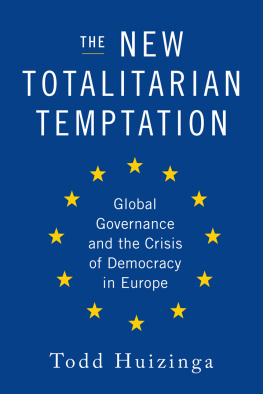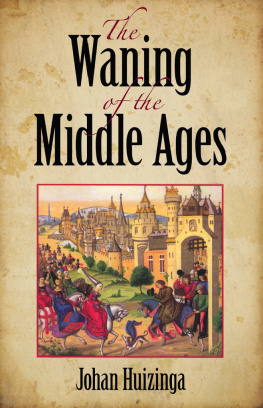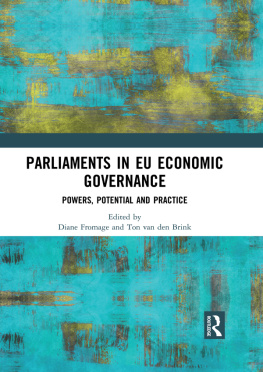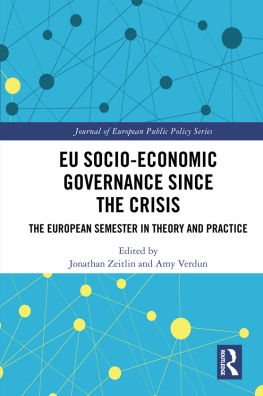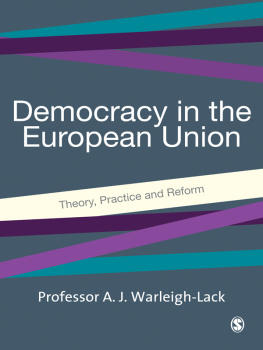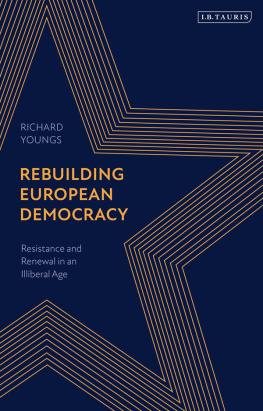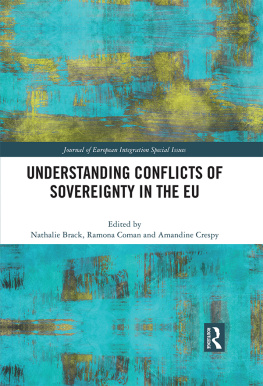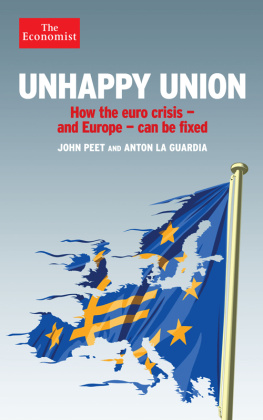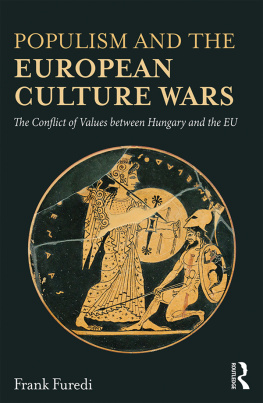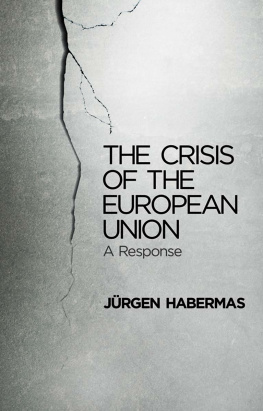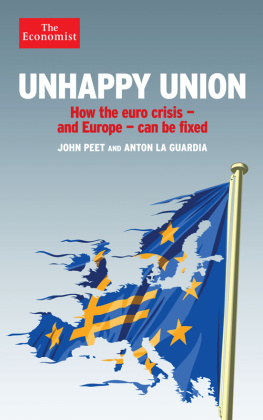I am grateful for the helpful efforts and support of friends and colleagues who have contributed greatly to this book. Frank Holub was a reliable, intelligent and insightful research assistant from the very beginning. He checked every fact, noted every source and helped give shape to the book at each stage of its development. Carol Staswick was a tremendous editor. She improved the manuscript immensely, increased its readability and sharpened my arguments. Richard Gaffin III, my friend and former Foreign Service colleague, carefully read the chapters for which I needed his expertise. His suggestions not only saved me from several errors but also made those chapters much better. Wallace Bratt, Steve Vanderwey, Linda Gaffin and Steve Gaffin took the time to read the manuscript or portions of it, encouraged me and provided several needed reality checks.
Roger Kimball and the team at Encounter believed in this project, gave me essential advice and guidance, and showed me the ropes. Thank you to Lauren Miklos, Heather Ohle, Sam Schneider, Nola Tully and Katherine Wong.
I benefited from countless shared experiences, conversations and debates with many former State Department colleagues, especially those from USEU Brussels and the State Department Office of European Union and Regional Affairs. Most of them will probably disagree with most of this book, but they taught me much about the European Union. I immensely respect the dedication of my former colleagues from Europe who are devoted to the European idea out of a deep patriotism and commitment to their fellow Europeans. Needless to say, all of the opinions in this book are my own and reflect neither the positions and policies of the U.S. government nor the views of my former colleagues.
A big thank you to my dear friends from Brussels: Heidi Fhrmann, Jones Hayden, Regine Kramer, John and Carolyn Stanton, and Graham Ziegner. You are salt and light to me, and not only regarding all matters European. I owe much also to Henk Jan van Schothorst, my friend and cofounder of the Transatlantic Christian Council, and to Miriam Lexmann, TCC board member and friend.
I appreciate my colleagues at the Acton Institute and at the Paul B. Henry Institute for the Study of Christianity and Politics for stimulating conversations and help with the manuscript, and for cheering me on in multiple ways: Jordan Ballor, Mike Cook, John Couretas, Kevin den Dulk, Brett Elder, Stephen Grabill, Sam Gregg, Kishore Jayabalan, Ken Marotte, Kris Alan Mauren, Michael Miller and Father Robert A. Sirico.
I am especially indebted to David Aikman, John Fonte and Os Guinness. David encouraged me to write the book, helped me with the book proposal, and provided perceptive insights throughout the process. Johns brilliant writing on global governance was the principal intellectual inspiration for the book. John connected me with Encounter Books and supported the project in innumerable ways. Os read the book proposal and the manuscript, gave invaluable advice and encouraged me to keep at it.
For their love and selflessness throughout the years, I thank my parents, Marvin and Carolynn Huizinga, and my brother, David. My lifelong friends Ron Villerius and Doug Boone have my deep appreciation as well.
Above all, I thank my precious wife, Vici, my beloved sons, Philip and Nicholas, and my cherished daughter, Sarah. This book is dedicated to them.
A NOTE ON THE TYPE
THE NEW TOTALITARIAN TEMPTATION has been set in Jonathan Hoeflers Mercury types. Originally created for the New Times newspaper chain and later adapted for general informational typography, the Mercury types were drawn in four grades intended to be used under variable printing conditions that is, to compensate for less-than-optimal presswork or for regional differences in paper stock and plant conditions. The result was a family of types that were optimized to print well in a vast number of sizes and formats. In books, Mercury makes a no-nonsense impression, crisp and open, direct and highly readable, yet possessed of real style and personality. 
 The display type is Joanna Sans Nova, Terrance Weinziers contemporary synthesis of Eric Gills typographic work and an outgrowth of his work in Monotypes recent reissue of Gills original designs.
The display type is Joanna Sans Nova, Terrance Weinziers contemporary synthesis of Eric Gills typographic work and an outgrowth of his work in Monotypes recent reissue of Gills original designs.
DESIGN & COMPOSITION BY CARL W. SCARBROUGH
If you spend any time at all in Brussels, the de facto capital city of the European Union, you are bound to hear that the EU is sui generis, Latin for the only one of its kind. The EU is unlike anything that came before it, and most definitely not to be understood as anything like an international organization in the usual sense of the term.
The uniqueness of the EU lies primarily in the degree of supranationalism it exhibits. In fact, supranationalism has been its primary distinguishing feature and the overriding ideal of its acolytes ever since the creation of the EUs first direct institutional forerunner, the European Coal and Steel Community. In their joint declaration upon signing the Treaty of Paris to establish the ECSC on April 18, 1951, the six signatory ministers said:
It is important to distinguish the terms international, transnational and supranational. To quote John Fonte, The term international is used mainly to denote relations among sovereign nation-states.... On the other hand, transnational means across or beyond nations... the term signifies legal action and authority beyond national laws, constitutions, and officials. Transnational politics is activity directed at the internal political affairs of nation-states, undertaken by both foreign and domestic non-state actors and by foreign states.... Supranational means above or over the nation-state. While advocates of transnational law are sometimes ambiguous about respect for national sovereignty, those who champion supranational law are more explicit about their aim to transfer decision-making authority (sovereign self-government) from the nation-state to global institutions, superior to any national institution. Fonte, Sovereignty or Submission: Will Americans Rule Themselves or Be Ruled by Others? (New York: Encounter Books, 2011), xxiiixxiv. The EU could be characterized as either a transnational or a supranational organization, depending on the context. The vision of the global governance advocates in the EU is a supranational future for the EU and the world.
In signing the Treaty establishing the European Coal and Steel Pool... the Contracting Parties have given proof of their determination to set up the first supra-national institution and thus to lay the real foundations of an organized Europe.
All European countries are free to participate in such an organized Europe. We sincerely hope that other nations will associate themselves with our efforts.
WHAT THE EU IS NOT
The EUs uniqueness comes out in sharp relief when one compares it with other international organizations that might seem at first glance to be similar. What sets the EU apart is the ceding of significant sovereign powers of the member states to the EU itself, as embodied in its institutions.
Take the Organization of American States (OAS), for example. Like the EU, the OAS is a regional organization. Its member states span the Americas, from Chile and Argentina in the south to Canada in the north. Similarly, the EUs member states span most of Europe, from Spain and Cyprus in the south to Sweden and Finland in the north. The EU boasts twenty-eight member states and the OAS includes thirty-five member states. Both have common institutions, and the OAS member states, like the EU member states, make declarations and cooperate on economic and political affairs.
But after that, the differences begin to outweigh the similarities. The OAS is an international organization of sovereign member states, in which national governments of the Western Hemisphere come together to discuss issues and solve problems in their mutual national interests. OAS members do not give up any sovereignty when they join. In fact, Article 1 of the OAS Charter explicitly stresses the member states sovereignty and expressly forbids the organization from intervening in their internal affairs. but this does not change the basic nature of the OAS as an international organization of sovereign member states, rather than a supranational organization like the EU in which member states pool their sovereignty.
Next page
